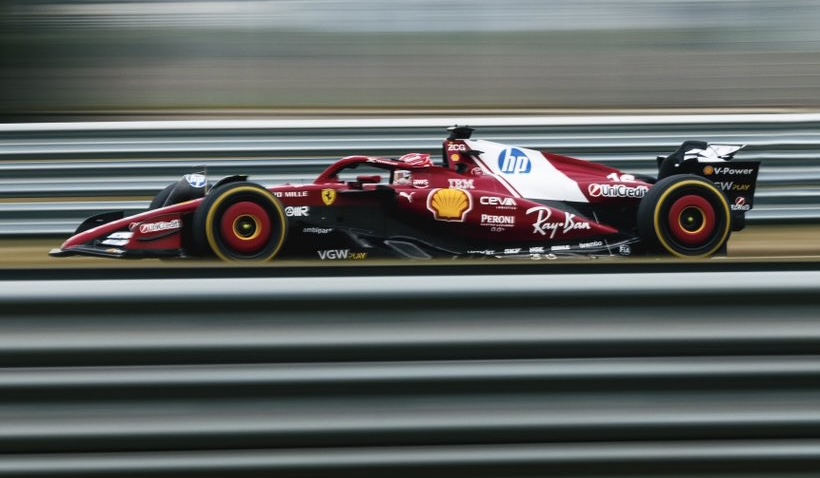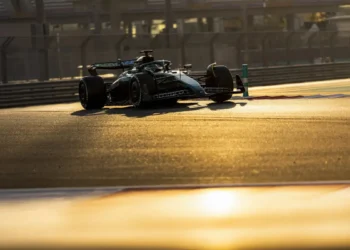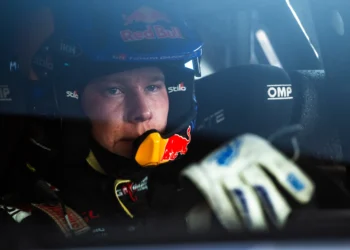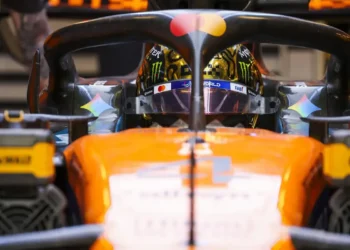Ferrari’s Bold SF-25 Evolution: New Front-Suspension and Hidden Enhancements
Ferrari’s technical team has promised a game-changing approach with its new SF-25 Formula 1 car, revealing significant updates that go beyond the traditional evolution of the SF-24. Despite finishing just 14 points shy of the 2024 Constructors’ Championship, Ferrari has opted for a dramatic departure from its previous design philosophy, opting for radical changes in a bid to break its title drought and close the performance gap in the final year of the current regulations.
A New Front-Suspension and an Ambitious Vision:
The most visible and striking change to the SF-25 is the switch to a pull-rod front suspension. For the first time since 2015, Ferrari has abandoned the push-rod layout in favor of the pull-rod design, a significant change that is expected to boost the car’s aerodynamics. According to Loic Serra, Ferrari’s Technical Director of Chassis, the aim is to create more room for aerodynamic improvements while also addressing performance challenges that had cropped up with the SF-24.
“The main concept of the SF-25 is really about finding some space to boost the aerodynamic development and the development in general,” Serra explained to Motorsport Week. “The SF-24 finished reasonably strong, but it was becoming more and more difficult to develop and find performance. So, we had to sort of find space to boost the development rate.”
This new approach signals Ferrari’s drive to ensure that the final year of the current rule cycle does not result in stagnation. The change in the suspension layout reflects a broader commitment to innovation, and while the alterations are notable, Serra assured that Ferrari’s overall car concept remains fundamentally the same, aiming to build on the strengths of the SF-24 rather than starting from scratch.
A Smooth Transition Despite Major Changes:
Serra emphasizes that despite the extensive overhaul of parts in the SF-25, Ferrari is maintaining continuity with the previous car’s performance concept. This means Ferrari is not expecting a major learning curve when the season kicks off, which could have posed a challenge with such drastic changes to the car’s design.
“The car is more of a continuity of the previous car,” Serra explained. “Effectively, we’ve changed a lot of parts, we’ve changed most of the parts on the car. But the main performance concept remains the same. So, I actually don’t expect a learning curve that is steeper than last year.”
“The Devil Is in the Details” — Hidden Changes Drive Ferrari’s Ambition:
While the front suspension change steals the spotlight, Ferrari’s quest for the title also includes numerous more subtle changes beneath the surface. Serra hinted that aerodynamics and small but impactful parts play a central role in the SF-25’s design evolution.
“We’re pointing at the front suspension because it’s the visible part of the iceberg. But, as we said earlier, most of the parts are new on the car. And it’s not necessarily the most visible bits that have got the biggest influence. So yes, yes, the devil is in the details,” he said, underscoring the importance of refining every element for better performance.
As Ferrari looks to end its title drought in 2025, the pressure is on to make the final year of the current regulations count. With the introduction of the SF-25, Ferrari is making bold decisions to increase its chances of seizing the coveted Constructors’ and Drivers’ titles, setting the stage for an exciting championship battle in the upcoming Formula 1 season.










